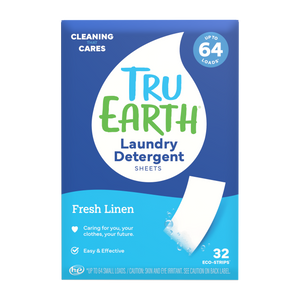Disposable cleaning wipes are a convenient way to clean and disinfect surfaces quickly However, the use of these products has become increasingly popular, raising important questions about their environmental impact.
While disposable cleaning wipes provide an easy and efficient solution to day-to-day messes, they, unfortunately, contribute significantly to plastic pollution and landfill waste. This article will explore the environmental impacts of disposable cleaning wipes, and what can be done to shift towards a greener way of cleaning.

What Are Wet Wipes?
Wet wipes have become an essential item in many households, and their popularity has skyrocketed over the last two decades. Whether used for cleaning surfaces or hands, baby care, feminine hygiene, or skin care - wet wipes are a convenient way to get quick and easy cleanliness from almost any situation.
Nearly 90% of wet wipes are made from artificial materials such as polyester, rayon, lyocell, and viscose. Their invention dates back to 1958 in the United States and billions of wet wipes are now used across the globe on a daily basis.
During the coronavirus pandemic, antibacterial and regular wet wipes saw an astronomical rise in usage as people sought ways to sanitize public surfaces more effectively.
Also, new parents often stock up on brands of baby-specific wet wipe products which contain aloe vera and other gentle ingredients that can be safely used on sensitive areas of their child’s skin without causing irritation.
With so many uses and practicalities, it is no wonder that wet wipes have become a household staple worldwide.
Why Are Wet Wipes Considered Bad?
Wet wipes are an environmental hazard that can have far-reaching consequences. Not only do they contain plastic and other non-biodegradable materials, but when these plastics break down into microplastics, they can enter the food chain and disrupt entire ecosystems.
In addition, 93% of blockages in household sewers are caused by wet wipes. This is why it is so important to be mindful of the disposing of wet wipes and seek out biodegradable alternatives whenever possible.

What Are Their Environmental Impacts?
Not only are wet wipes made up of non-biodegradable plastic fibers, which pollute waterways and landfills, but their improper disposal is costing countries millions of dollars annually. The majority of these costs come from unblocking sewers that have become clogged with wet wipes.
Dumping them down the toilet became an alarming phenomenon since the mid-2000s, and has continued to rise at an almost alarming rate; it's estimated that every year over 300,000 sewer blockages occur due to this practice.
Why Should We Move Toward the Greener Direction?
When it comes to thinking green when purchasing wet wipes, biodegradability is key. They should be made from plant-based materials designed to break down faster than regular plastic, such as bamboo and cotton. It helps if you look for products labeled as ‘biobased’ or ‘compostable’ for maximum environmental benefit.
Furthermore, wet wipes should not contain microbeads or other plastic particles that can damage aquatic ecosystems when released into the environment. It’s also important to only buy what you need - bulk buying may seem like a good idea, but it’s not necessary if you’re using reusable alternatives on a regular basis.
Finally, binning instead of flushing is essential; despite what the packaging may say, no product is designed to cope with the conditions found in sewage systems, so disposing of them correctly is crucial.
What Is the Best Option?
Using reusable dish cloths is a significantly better option than wet wipes because it offers a much more sustainable and eco-friendly solution. Reusable cloths are made from 100% biodegradable materials such as cotton and linen, which can be washed and reused hundreds of times before needing to be replaced.
In addition to being more environmentally friendly, reusable cloths can absorb much more water than disposable wipes and are more effective in cleaning up spills. Moreover, reusable cloths also help save money as they can be used multiple times before needing to be replaced, whereas wet wipes need to be purchased over and over again.
Another benefit of using reusable cloths is that they are generally softer on surfaces than disposable wipes; this means that they can clean without scratching or damaging delicate surfaces such as glassware or porcelain countertops.
In conclusion, using reusable dish clothes is a much better option than wet wipes due to their environmental friendliness, ability to absorb more liquid, cost-effectiveness, and gentleness on surfaces.
We Care About the Environment, and You Should Too!
In conclusion, the #TruEarthMovement is a shining example of how one person can make a real difference. By making small changes in their own lives, they have been able to inspire thousands of people to follow suit and help reduce their carbon footprint.

Together, we have already made a significant impact by reducing 8,600,382 laundry jugs from entering landfills. As the movement grows and more people become involved, our chances of achieving bigger goals and maintaining positive environmental change are only greater.
We must remain active and diligent in this cause if we want to leave behind a better world for future generations.

